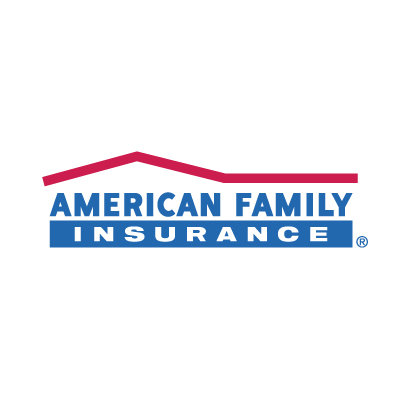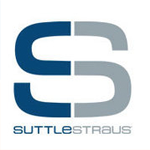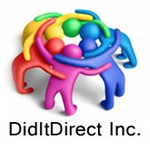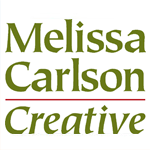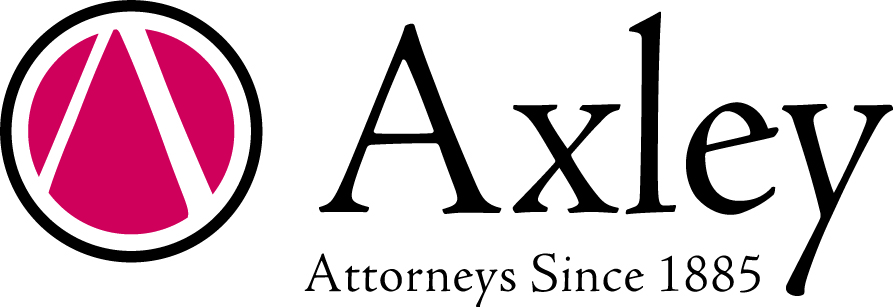
- This event has passed.

October 16, 2013 @ 12:00 am
Event Navigation
Amy Throndsen started out October’s Social Media Breakfast Madison presentation with a statement few could dispute: “When you sell waterbeds for cows,” she said, “you stand out.”
That’s a great foundation for building a social media program, she said, “But standing out is not enough.”
“We want people to engage with us,” she said at the meeting at Boumatic on Madison’s East Side. “We want people to know who we are and say, ‘Tell me about those DCC Waterbeds!”
That’s right, Amy helps run her family business – DCC (Dual Chamber Cow) Waterbeds – also known as Waterbeds for Cows.
It’s a unique business to say the least, but it’s one that has a specialized and loyal audience of dairy farmers, a group that is increasingly embracing social media as a way to stay informed and up to date on the latest farm technology. DCC Waterbeds is right there with them, using social media to build and maintain those valuable connections that lead to brand identification and loyalty.
What is a cow waterbed? Well, let’s go with the official description: “DCC Waterbeds provide superior cow comfort without the headaches related to other bedding systems. The water suspends the cow’s pressure points. The beds’ unique features maximize cow comfort and help improve herd health, which allows cows to do what they do best: make milk.”
Drawing off the catchy appeal of the business, Amy and her four colleagues have managed to get the attention of the media nationwide, having appeared in CNN, the New York Times and the Progressive Dairyman, not to mention many local media outlets that reach their targeted rural audience.
On top of that, they have built a social media strategy that encompasses three key components:
1) Don’t just learn from your mistakes, profit from them. For example, Amy said, three years ago the business made “a $10,000 mistake” related to development of a website. Instead of hiding in shame, they contacted the New York Times small business blog to tell their story, pitched as a learning experience. The Times enthusiastically wrote about it, and the story got picked up nationwide. Yes, it drew attention to the mistake, but more importantly it provided nationwide exposure to the Waterbeds for Cows brand.
2) Push social media beyond the retweet. For example, Amy said, DCC Waterbeds started tweeting and retweeing the influential Progressive Dairyman publication, building a relationship, but then went a step further and offered to write articles. “We pitched stories and they were accepted, so we kept up the cycle,” she said. Many media outlets, especially the smaller ones, are more than willing to accept your well written articles.
“Pick your most strategic audience and develop relationships with their ad rep and social media team,” Amy said. “Get through the gatekeeper and seek out ways you can provide value to them and then write a high value article.”
Are you intimidated by the prospect? “Just start with one,” Amy said. “We write about family farms, cow comfort and dairy industry. We stand out as a valuable resource to our targeted media.”
3) Seek inspiration from the most creative people, blogs, magazines, or books you can find – and then inspire others.
“If you can inspire someone, you catch their attention,” she said.
Amy recently found a way to tap into that inspiration by involving DCC Waterbeds in the Movember campaign for men’s health. Men start the month of November clean shaven and grow a mustache to raise awareness about men’s health issues, particularly prostate cancer. It’s what Amy described as “part fun, part fund-raiser” and is a great way to engage the dairy industry, which she said is “ full of men who are very private.” The campaign, which was kicked off at the World Dairy Expo in Madison, drew the support of 11 dairy companies and, of course, involves a lot of social media organized as a cause campaign.
“We wanted whole dairy industry to embrace it, with us taking the lead,” she said. “It’s new and different, fun and totally awkward, interesting and engaging. It is an opportunity to stand out and stand out with a message we can support.”
Amy talked emotionally about her involvement in Movember and then challenged the audience: “What motivates you?” she asked, “What inspires you and makes you inspiring?”
Dairy Carrie
If you’re not convinced yet that farming and social media go hand in hand, meet Carrie Mess, a dairy farmer from Lake Mills and owner of the DairyCarrie.com blog (@DairyCarrie). Using the influence of her blog, Carrie got the Panera restaurant chain to at least partially back off from a commercial that she felt insulted farmers who use antibiotics.
“It’s what we do on social media,” she said. Agriculture + Advocate = AgVocate.
The dairy industry is under attack from some quarters, she noted, and social media provides the means to speak out on behalf of dairy farmers.
“I need to be out there talking about what I do, how I do it, why I do it,” she said.
And she’s not the only one. You may be surprised to find out that 92% of farmers have smart phones, Carrie said.
“Why are farmers flocking to social media?” she asked. “Because we need to be. Our customer base has changed.”
“Our whole shtick on social media is to tell our stories. Rather than letting people tell our stories for us we are saying wait a minute maybe we should do it,” Carrie said. After all, “who do you want talking about your business, your employees or your competitors?”
“If farmers can make connections via social media, people can go directly to the source for information about their food.”
One growing popular resource for farmers – and one that Carrie is involved with – is AgChat.org, which teaches farmers and ranchers how to use social media. (#AgChat and #FoodChat)
Carrie has learned that humor and emotion help capture people’s attention in social media.
“How do I keep people wanting to read about cows and corn? I put up a lot of pictures of cute calves,” she said. “I use a lot of humor in my posts. Showing the soft, angry or human side of our business drives interaction on my blog, Facebook and Twitter.”
“Bring emotion in,” she added. “Everybody has emotions. If we can create content that makes people happy, sad, angry we’re going to connect on a deeper level than if we just give our message.”
Another tip Carrie had is to stop using your industry’s lingo. “Sometimes we are so immersed in our industry we have a hard time stepping back and seeing how this looks to somebody else.
“We have to think about how we see the world and how others see the world and we need to be able to put ourselves in others’ shoes.”
Carrie said she first got started with social media when she discovered Twitter, and it has opened up a world of opportunities.
“I am so glad I got on Twitter,” she said. “I learned to become an advocate to my industry.”
Written by Bill Hurley, (@billhurleymedia / billhurleymedia.com / beachmaniac.com) editor, writer, social media strategist, digital publisher. BillHurleyMail@gmail.com.
Thanks to Geekazine for this video of the SMBMAD Breakfast presentation.
Make sure to show your appreciation to our sponsors who keep this a quality event with fantastic food at terrific venues (and did we mention for no charge to you?!):
Location: Boumatic
SPONSORS


